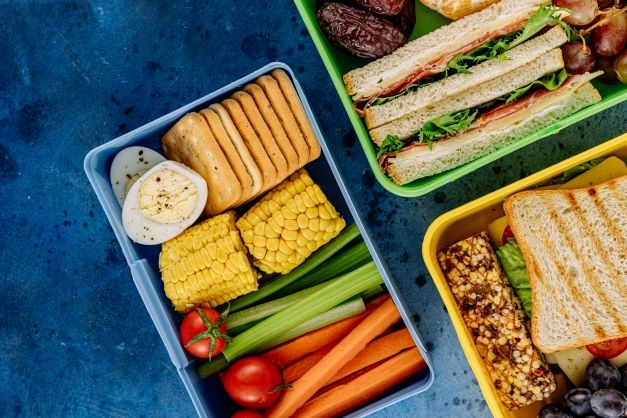Australian Food Safety Week will run from 12-19th November. This year’s theme is Food safety – raw and risky. As the theme suggests, the focus will be on covering the risk of food poisoning from raw or minimally cooked meat, poultry, fish, eggs & vegetables as well as the risk of possible parasite infections. This year marks the 25th Anniversary of the Food Safety Information Council have been educating the Australian community about food safety.
Food safety at the workplace
Bringing your lunch to work is not only a healthy option but also cost effective. But not all workplaces have the facilities, (for whatever reason) to be able to safely store your food in a fridge. With research showing that there are an estimated 4.1 million cases of food poisoning in Australia each year, it is time we focus on safely packaging and storing our food. Bacteria can grow quickly in some foods, such as cooked poultry and other meats, dairy products and sandwich fillings so it’s important to keep your lunch boxes cool. A simple way of doing this is to include a freezer block in with your lunch or freeze a juice box and add that to keep your food cool until lunchtime.
5 simple lunchbox food safety tips:
- When buying lunchboxes choose ones that have room for a frozen drink or freezer block & are easy to clean & dry
- Always wash & dry your hands thoroughly before preparing food
- Wash all fruits and vegetables thoroughly
- Make sure lunchbox foods are always well separated from other foods in the refrigerator, particularly raw meats, chicken & fish
- Keep the lunch cool in the fridge until you are about to leave home
(Source: Food Safety Information Council)
Here are some good tips from the Food Safety Information Council on thing to do and look for.
Choose
- Low risk foods
- Lunchboxes that are easy to clean & dry. (Insulated lunchboxes are a great idea)
Clean
- When preparing food, always practice scrupulous handwashing
- Lunchboxes & reusable drink bottles must be thoroughly washed and dried daily. Replace if cracked, split or crazed, as bugs love hidey holes
- Ensure cutting boards, benches & utensils are clean & dry
- Wash all fruits & vegetables thoroughly
- With a staff kitchen, set up a roster to ensure bench tops are clean & dish cloths, sponges, brushes & tea towels are clean & replaced regularly
- Wash dirty dishes in hot soapy water or put in the dishwasher
Cook
- Make sure lunch foods are cooked properly in the first place
- When reheating, make sure they are steaming hot all the way through
Chill
- Lunches can safely be prepared a little ahead of time provided they are kept in the fridge or frozen
- When leaving home, pack a frozen juice box, water bottle or commercial ice pack with the lunch. Place perishable foods such as cheeses and sandwiches between the frozen items
- Keep lunchboxes away from heat sources including direct sunlight
- Divide cooked leftovers into small lunch-sized portions so they refrigerate or freeze quickly
- Put food in the fridge as soon as you get to work or if there is no fridge available, pack food in insulated containers with frozen drinks or freezer bricks
- Staff fridges should be uncrowded and running at or below 5°C
Separate
- Make sure lunchbox foods have been well separated from other foods in the refrigerator, particularly meats, chicken & fish
General Advice
- If in doubt throw it out!
- Warn children against sharing drinks and food due to allergies
- If you or your child has food poisoning don’t go to work or school & avoid handling food for others for 48 hours after symptoms stop. If food poisoning symptoms persist, visit a doctor.
(Source: Food Safety Information Council)
